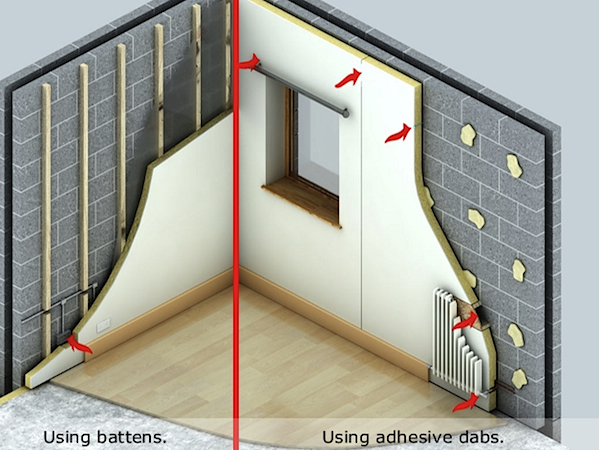Embellishing After Drywall Installation: What One Need to Keep in Mind
Dry lining has become a popular choice for creating smooth walls and ceilings in both home and business spaces. This method involves attaching plasterboard to walls and ceilings using aluminum or timber frames, resulting in a polished finish that is ready for finishing. Once your drylining services are complete, however, the real fun begins—transforming your newly finished spaces with your individual style and touch.

Before you get started with the decorating process, there are several important considerations to keep in mind. From selecting the right paint and wallpaper to comprehending how to effectively accentuate the drylined surfaces, making educated choices can significantly enhance the overall look and feel of your space. By taking the time to plan your decorating approach intentionally, you can ensure that the benefits of expert drylining are fully achieved in your residence or business environment.
Grasping Drylining Approaches
Dry Lining is a construction technique employed for producing indoor barriers and roofs without the requirement for conventional plastering. It involves the installation of drywall panels to form a smooth surface that is ready for design. This method is favored for its rapidity and effectiveness, enabling for quick finalization of tasks while giving excellent insulation for heat and sound. Comprehending the principles of drylining can significantly enhance the quality of your indoor aesthetics.
The procedure typically begins with the outlining of the area to be fitted, which can be done using aluminum or wood studs. Once the skeleton is in position, plasterboard is fixed to the frames, either by affixing it straight to the supports or employing glue for a more seamless look. This method also permits extra features such as insulation materials or cabling to be placed within the spaces inside the walls, which further improves the effectiveness of the finished structure.
After fitting, the connections between the boards are sealed and coated with a joint compound material, which is then polished to achieve a uniform surface. This process is crucial, as it ensures that the partitions are smooth and ready for decoration or other designs. Understanding these drylining techniques not only assists in obtaining a professional aesthetic but also ensures that the construction adheres to building regulations and guidelines.
Choosing the Ideal Decorative Treatment
In the context of decorating following the process of drylining, selecting the appropriate final touch is vital for achieving both aesthetic appeal and longevity. There are several options to choose from, including paint, wallpaper, and textured finishes. Each choice can dramatically change the ambiance of a room, so it’s important to consider the complete aesthetic theme you want to create. A sleek, matte paint might work well for a simple look, while a bold design can introduce personality to a space.
A further factor to consider is the functionality of the treatment. For busy spaces or spaces prone to moisture, such as cooking areas and washrooms, a cleanable or moisture-resistant coating is critical. Textured finishes can also hide imperfections that may occur during the drylining, providing an added layer of functionality. Knowing the specific requirements of each room will help you choose a design treatment that not only looks good but also stands the test of time.
In conclusion, it is recommended to test swatches before making a conclusive decision. Color samples or wall covering samples can help you visualize how the hues and designs will interact with the illumination and current elements of the space. Additionally, discussing with experts in drylining services can offer useful advice into which treatments are most suitable with your walls. In the end, the ideal decorative finish will improve your home’s interior while effectively complementing the drylined surfaces.
Common Errors to Avoid
One frequent mistake when decorating after installing drywall is failing to adequately prepare the surface. It is crucial to ensure that the walls after drylining are spotless, dry, and free from any dust or debris before applying paint or wallpaper. Neglecting this step can lead to poor adhesion and an uneven finish, ultimately compromising the look of your newly embellished space.
Another mistake to avoid is ignoring the significance of priming. Many assume that a single coat of paint will be enough, but without a good primer, the paint may not stick well or may not show true color. Priming helps to protect the surface, improves coverage, and increases the longevity of your paint job, making it a vital step in the embellishing process after drywall installation.
Lastly, neglecting to consider lighting when choosing colors can be detrimental. Different light environments can drastically change how colors appear on your walls. Before committing to a color, test samples in different lighting throughout the day to ensure they satisfy your requirements. This easy practice can save you time and frustration down the line.